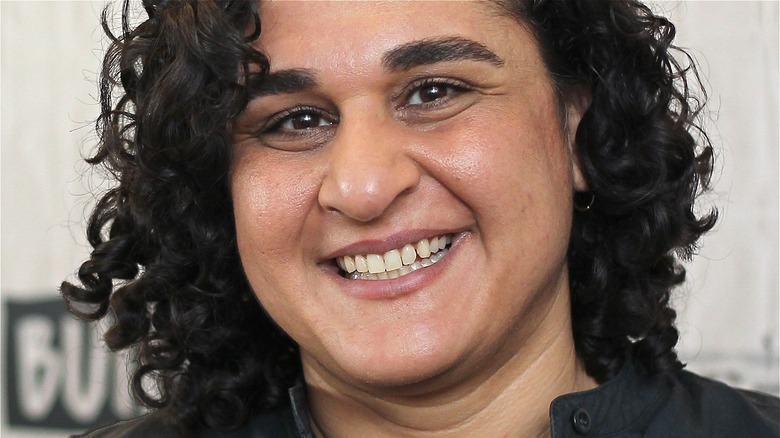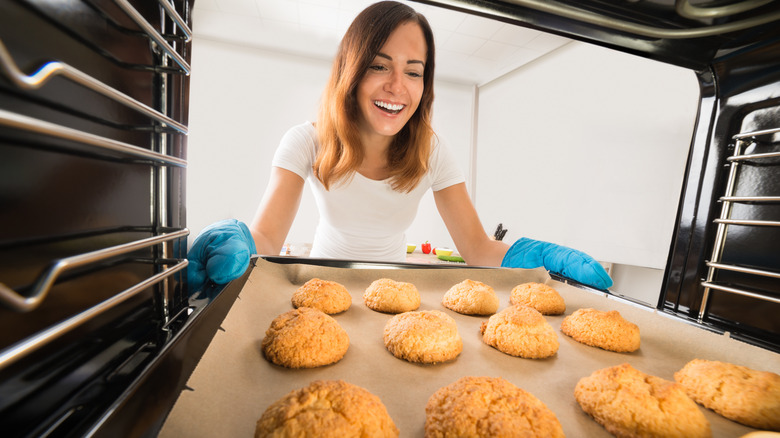What You Need To Know About Using An Oven, According To Samin Nosrat
Samin Nosrat is a Berkeley-based chef who got her start at the iconic Chez Panisse, working under Alice Waters. She is best known for her James Beard Award Winning cookbook, "Salt Fat Acid Heat," and her Netflix series by the same name, where she explores the four fundamental building blocks of cooking. Her book and show are filled with gold nuggets of information to level up your cooking game, no matter if you're a beginner or a professional chef.
In the "Salt" episode, Nosrat visits Japan and explores how salt is made and harvested and how to layer salt when cooking (via Food & Wine). In the "Fat" episode, she journeys to Italy, doing a deep dive into liquid gold, aka olive oil, cheese, and cured meats. Next comes "Acid", where Nosrat travels to Mexico to taste the numerous forms of citrus and learn how acid is necessary to balance any dish. For the "Heat" episode, Nosrat comes back to her home in Berkeley, California where she discusses the most fundamental process of cooking.
Heat transforms a product, physically and chemically changing the shape of the proteins, fats, and carbohydrates, according to Serious Eats. This transfer of energy is irreversible too, for instance, you cannot uncook a roasted chicken. The main takeaway from Samin Nosrat's, "Salt Fat Acid Heat" Heat episode, is that your conventional home oven isn't the same temperature from top to bottom, left to right.
Know your oven's hot spots and cold spots
"The back of the oven is where all of the heat really is, because every time you open the oven all of the heat escapes out the front," said Nosrat. "So the front will always be cooler and the back will always be hotter." This is why when cooking anything that requires even browning, like baking cookies, recipes call for rotating the sheet trays top-to-bottom and front-to-back.
In addition to the back of the oven being hotter, the top is also generally hotter than the bottom, advises Real Simple. The simple explanation is that heat rises, but if your conventional oven's heating element is on the bottom, the heat can fluctuate as this turns on and off during the heating process to maintain the set temperature.
Just like snowflakes, each oven is different, so the best way to get to know your unique oven is to perform a test to learn its hot and cold spots. The Kitchn recommends the best way to do this is to bake a parchment-lined sheet tray with an even layer of granulated sugar on the middle rack of your oven for 10 minutes at 400 degrees Fahrenheit. Upon removing it from the oven, you'll have a "map" of your oven's hot and cold spots — hotter zones will melt and even burn the sugar, whereas cold spots can be identified from patches of unmelted sugar.
Use this knowledge to position elements that you want to develop color in the hot zones, and conversely shield elements you don't want to be colored by positioning in cold zones.

